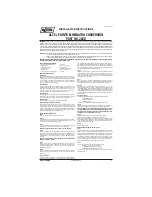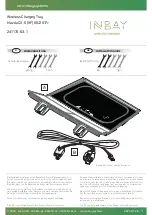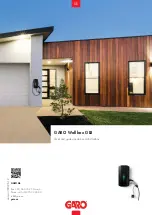
181
Starting and driving
Checks before driving
Make sure that the car and trailer are in
good working order. This is essential since
towing a trailer increases the strain on the
car.
• Check and if necessary adjust the tire
pressure of the car and trailer.
• Make sure all wheel bolts are properly
tightened.
• Make sure that the equipment joining the
car and trailer is properly secured and
adjusted.
• Make sure the trailer’s electrical cable is
properly connected and is not so long that
it drags along the ground. Also, make
sure the cable is not too short and risks
breaking when turning a corner.
• Check all bulbs.
• Check the car and trailer brakes.
• Make sure that all items on or in the
camper or trailer are properly secured.
• Make sure that the trailer’s jockey wheel
is raised and locked.
• Check the distribution of the load so that
the car and trailer are well balanced.
• Check that the rearview mirrors provide
the best possible rearward vision.
• Make sure the trailer’s safety cable is
correctly attached.
Driving considerations
Always take extra care when towing a
trailer, as the car’s handling will be different
and its braking performance reduced. The
trailer’s braking system and suspension
also have a considerable effect on these
characteristics. See also "Driving with a
load" on page 183.
Drive carefully:
• descending hills
• on uneven roads
• over railway crossings
• when meeting large vehicles
If the car has automatic transmission, select
gear M1 when ascending or descending
steep hills.
Reversing
Get someone to help you keep an eye out
behind the trailer as the door mirrors do not
always provide sufficient rearward vision
when reversing.
NOTICE
If the camper or trailer has additional elec-
trical equipment, besides the standard
exterior lighting (e.g. interior lighting, a
fan or a charger for a separate battery)
and it is connected to the car via the trailer
connector, to be provided with a separate
power supply, the camper or trailer must
have a 13-pin connector as specified in
ISO 11446.
















































